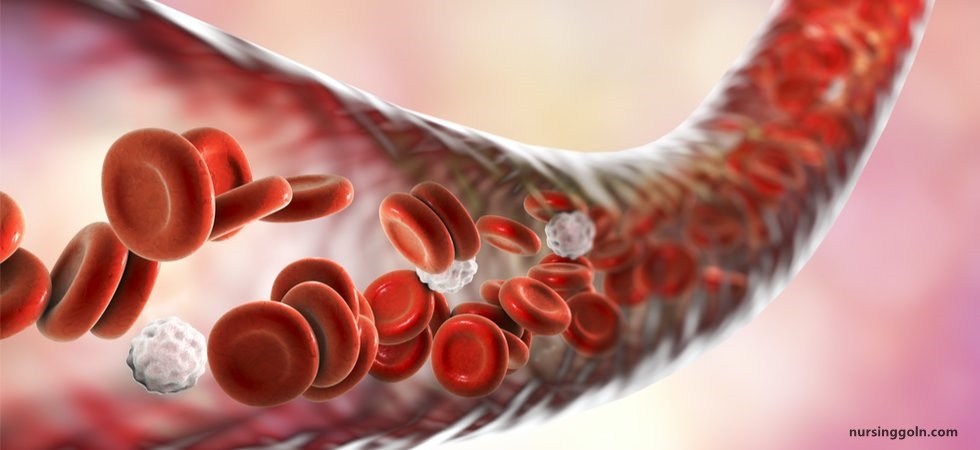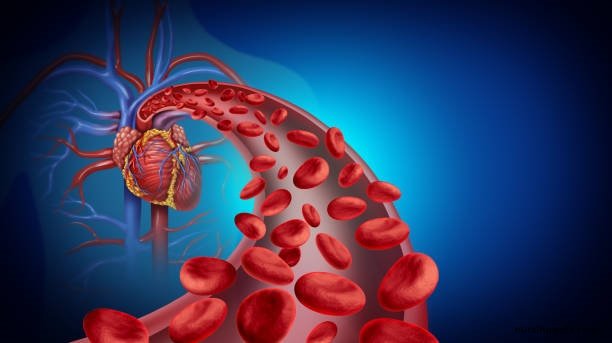Today our topic of discussion is ” Blood Flow, Blood Pressure, and Resistance “. Blood flow, blood-pressure, and resistance are fundamental concepts that govern the dynamics of the cardiovascular system. The heart pumps blood throughout the body via the blood vessels, but it’s the delicate balance of these three parameters that ensure efficient circulation. Understanding these principles offers insights into the intricacies of our cardiovascular health and the potential complications that may arise when any of these parameters is altered.

Blood Flow, Blood Pressure, and Resistance: The Cardiovascular System: Blood Vessels and Circulation
1. Blood Flow
Blood flow, simply put, is the movement of blood through the vessels. It is driven by the heart, which acts as a pump, propelling blood into the arterial system.
- Rate of Blood Flow: It refers to the amount of blood passing through a vessel, an organ, or the entire circulation in a given period. Typically measured in milliliters per minute (ml/min), cardiac output (the volume of blood pumped by the heart in one minute) is an essential measure of the rate of blood-flow.
- Factors Affecting Blood Flow:
- Cardiac Output: A rise in cardiac output typically increases blood-flow.
- Blood Viscosity: Increased viscosity (thickness) can decrease blood-flow.
- Length of the Vascular System: The longer the system, the greater the resistance, leading to decreased blood-flow.
2. Blood Pressure
Blood-pressure (BP) is the force exerted by the blood against the walls of the blood vessels. It’s integral for the movement of blood through the body.
- Systolic and Diastolic Pressure: BP is typically presented as two measurements. Systolic pressure is the pressure in the arteries during heart contraction, while diastolic pressure is the pressure during heart relaxation.
- Measurement: Blood-pressure is usually measured in millimeters of mercury (mm Hg) and is recorded as systolic/diastolic, e.g., 120/80 mm Hg.
- Factors Affecting Blood Pressure:
- Cardiac Output: Increased cardiac output can raise BP.
- Peripheral Resistance: Higher resistance can elevate BP.
- Volume of Blood: An increase in blood volume can increase BP.

3. Resistance
Resistance, often termed vascular resistance, refers to the opposition to blood-flow due to friction between the blood and the walls of the blood vessels.
- Factors Affecting Resistance:
- Vessel Diameter: Smaller diameter vessels (like arterioles) offer more resistance. A slight change in vessel diameter can profoundly impact resistance.
- Blood Viscosity: Blood that’s thicker (higher hematocrit or protein content) will flow less easily, increasing resistance.
- Vessel Length: The longer the vessel, the greater the resistance to blood-flow.
- Role of Arterioles: Arterioles, tiny branches of arteries, play a crucial role in determining resistance. By constricting or dilating, they control the resistance and, by extension, the flow of blood to various tissues.

4. Interrelationship Between Blood Flow, Pressure, and Resistance
The relationship can be summarized by Ohm’s law for blood-flow: Blood-Flow (Q) = Blood-Pressure (ΔP) / Resistance (R). This formula indicates that blood-flow is directly proportional to the difference in blood-pressure and inversely proportional to resistance.
5. Regulation of Blood Pressure and Flow
The body employs a range of mechanisms to maintain optimal BP and ensure adequate blood-flow to tissues:
- Neural Mechanisms: The autonomic nervous system (ANS) can alter blood vessel diameter and cardiac output, thus regulating BP. For example, the sympathetic ANS can cause vasoconstriction, increasing resistance and BP.
- Hormonal Mechanisms: Hormones like epinephrine, norepinephrine, and angiotensin II can induce vasoconstriction. In contrast, atrial natriuretic peptide causes vasodilation, decreasing BP.
- Local Mechanisms: Tissues and organs can regulate their blood-flow based on their current needs. For instance, during exercise, muscles release chemicals that cause vasodilation, increasing blood-flow to meet the higher oxygen demand.

6. Implications for Health
Disruptions in blood-flow, pressure, or resistance can have severe health consequences:
- Hypertension: Chronic high blood-pressure is a significant risk factor for heart disease, stroke, and kidney failure.
- Atherosclerosis: This condition, characterized by plaque build-up in arteries, can increase resistance, affecting blood-flow and pressure.
- Shock: A sudden drop in blood-flow can deprive organs of oxygen, leading to potential organ failure.
7. Conclusion
Blood-flow, blood-pressure, and resistance are intricately linked parameters that ensure efficient circulation within our bodies. The delicate balance maintained by various physiological mechanisms reflects the body’s complexity and adaptability. Recognizing the importance of these parameters and how they interact provides a foundation for understanding cardiovascular health and the implications of related disorders. Maintaining cardiovascular health requires an understanding of these concepts and an active role in managing lifestyle factors that influence them.
Read more:
